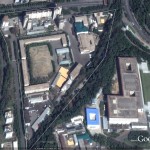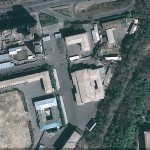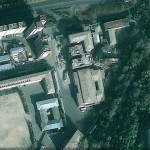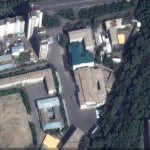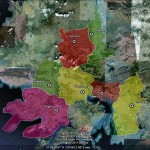It has been a couple of years since we heard from Sean Garland, but the Irish Times reports that the alleged purveyor of alleged North Korean “supernotes” is fighting his exztradition to the US at Ireland’s high court. According to the story:
A veteran republican handed over almost $250,000 in Russian hotels in an international plot to spread the notes across Europe, a court heard.
Authorities in the US have accused Sean Garland of being the ringleader of a massive forgery racket that distributed the top grade counterfeit $100 bills.
The former IRA leader is fighting his extradition to the US at the High Court in Dublin, which heard Garland met a co-conspirator twice in Moscow with the fake cash.
Garland, 77, also the ex-president of the Workers’ Party of Ireland, denies the allegations.
In an affidavit to the court, Brenda Johnson, assistant US attorney, said: “This case involved a long-standing and large-scale supernotes distribution network (the Garland organisation) based in the Republic of Ireland and headed by Sean Garland, a senior officer in the Irish Workers’ Party.”
The US Secret Service (USSS) discovered the ‘supernotes’ were sourced in the Democratic Republic of North Korea, she said, and were transported around the world by North Korean officials travelling under diplomatic cover.
They also allege Garland and six co-conspirators used couriers to transport supernotes and payments to avoid detection themselves.
The international probe, which also involved the UK’s National Crime Squad (NCS) – now the Serious and Organised Crime Agency (Soca) – and the interior ministry of Russia (MVD), found the high-grade counterfeit bills were in worldwide circulation from the late 1980s until at least July 2000.
Ms Johnson alleged one of Garland’s alleged co-conspirators, Hugh Todd, later told investigators he purchased more than $250,000 of supernotes from “the Garland organisation” which were redistributed into the world economy through currency exchanges across Europe.
He maintained he first met the Irishman in the Radisson Hotel in Moscow in April 1998, where Mr Garland emptied a leather bag packed with approximately 80,000 dollars of counterfeit US notes on to a bed for $30,000 in genuine notes.
Two months later, the pair met in the Savoy Hotel in Moscow, where between $160,000 and $180,000 of counterfeit US currency was handed over, it is claimed.
Records with Scandinavian Airlines prove Mr Garland was in Russia on both occasions, she added.
An undercover NCS officer infiltrated the group in 1999 and met with members in several pubs and hotels around Birmingham, where they discussed the counterfeit notes and how their boss ’Sean’ sourced them in Russia.
Ms Johnson’s affidavit states Garland knew the Federal Reserve notes were counterfeit, that he travelled circuitous routes and met with other conspirators to discuss the supernotes operation and engage in transactions.
“Some members who were apprehended in possession of or passing notes have admitted that Garland was the source and leader of an illegal supernote distribution organisation and that (Christopher) Corcoran was his direct contact, communicator and negotiator,” she said.
“Their statements are substantiated by documentary evidence, physical and electronic surveillance and other witness accounts.”
Garland, of Beldonstown, Brownstown, Navan, Co Meath, was a former IRA leader in the late 1960s and early 1970s. He was a key figure in securing the official IRA ceasefire of May 1972.
He was initially arrested by the PSNI on foot of an extradition warrant by the US authorities in October 2005 at the Workers’ Party annual conference in Belfast. He fled to the South when released on bail.
He was later arrested outside the Workers’ Party in Dublin in January 2009 and released on strict bail conditions, which included surrendering the title deeds to his family home.
Barristers for Garland maintained the pensioner should not be extradited as the alleged offence happened in Ireland and was based on hearsay.
Michael Forde, senior counsel, argued his client had been accused of a complex, sophisticated trans-national conspiracy, but that the charge fell under Ireland’s own forgery or money-laundering laws.
“The rationale is very simple,” said Mr Forde. “If the offence was committed against Irish law, and a substantial part committed in the State, then the State should prosecute.”
His legal team also argued Garland’s fundamental rights have been infringed, that there had been a delay is making the second extradition order and that the extradition was connected with a political offence.
Mr Forde also claimed the application was hearsay based on hearsay and had not established a prima facie case.
“The question this court has to ask itself is there enough admissible evidence here to justify putting Mr Garland on trial,” he added.
The extradition hearing before Mr Justice John Edwards is listed for four days.

